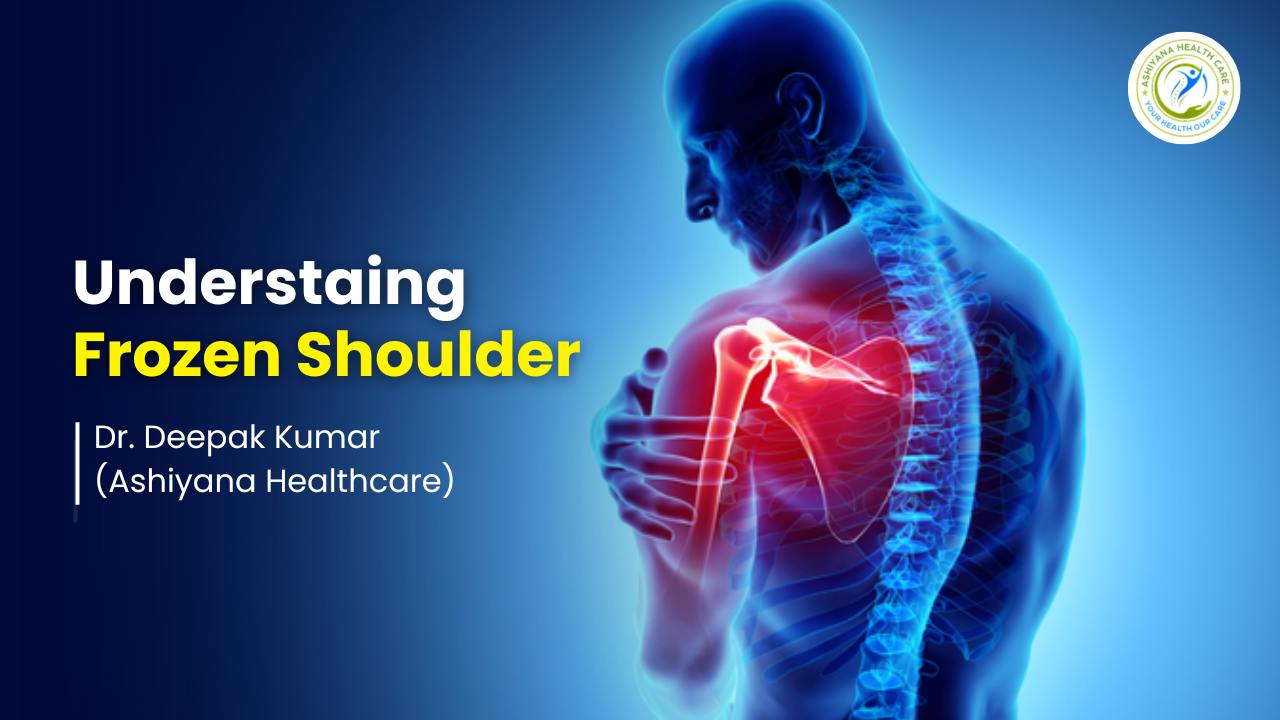
Frozen Shoulder: Early Signs, Risk Factors, and Effective Therapies
Introduction
Frozen shoulder, also known as adhesive capsulitis, is a painful condition that leads to stiffness and restricted movement in the shoulder joint. It develops gradually and can severely impact daily activities. Understanding its early signs, risk factors, and treatment options can help manage and prevent further complications.
What is Frozen Shoulder?
Frozen shoulder occurs when the connective tissue surrounding the shoulder joint thickens and tightens, limiting mobility. It typically develops in three stages:
- Freezing Stage: Gradual onset of pain and stiffness, making shoulder movements difficult.
- Frozen Stage: The pain may reduce, but stiffness persists, limiting range of motion.
- Thawing Stage: Movement gradually improves, and normal function is restored over time.
The entire process can take several months to years to resolve completely.
Early Signs and Symptoms
Recognizing the early symptoms of frozen shoulder can lead to timely treatment and prevent worsening of the condition.
1. Gradual Onset of Shoulder Pain
Pain usually starts mildly but worsens over time, especially during movement.
2. Stiffness and Limited Mobility
Difficulty in lifting the arm, reaching behind the back, or performing overhead activities.
3. Increased Pain at Night
Pain often intensifies at night, disturbing sleep patterns and causing discomfort.
4. Muscle Weakness
Due to limited use, the muscles around the shoulder may weaken over time.
Causes and Risk Factors
Several factors contribute to the development of frozen shoulder. Understanding these risks can help in prevention and early intervention.
1. Age and Gender
- More common in individuals aged 40-60 years.
- Women are at a higher risk than men.
2. Previous Shoulder Injury or Surgery
- Immobilization after an injury or surgery can lead to frozen shoulder.
- Lack of movement during recovery increases the risk.
3. Underlying Medical Conditions
- Diabetes: Higher prevalence among diabetic patients.
- Thyroid Disorders: Hypothyroidism and hyperthyroidism can contribute to stiffness.
- Heart Disease and Parkinson’s Disease: Associated with a higher risk of frozen shoulder.
4. Sedentary Lifestyle
- Prolonged inactivity or poor posture can lead to stiffness in the shoulder joint.
Diagnosis of Frozen Shoulder
A doctor may perform the following tests to diagnose frozen shoulder:
1. Physical Examination
- Checking shoulder mobility by asking the patient to move their arm in different directions.
- Assessing pain levels and stiffness.
2. Imaging Tests
- X-rays: Rule out arthritis or fractures.
- MRI or Ultrasound: Detects inflammation or other underlying conditions.
Effective Treatment Options
Frozen shoulder treatment focuses on reducing pain, improving mobility, and restoring normal function. The approach depends on the severity of the condition.
1. Home Remedies and Lifestyle Modifications
- Heat and Cold Therapy: Applying warm compresses or ice packs to reduce inflammation and ease pain.
- Gentle Stretching Exercises: Regular mobility exercises prevent further stiffness.
- Good Posture Maintenance: Avoid slouching and ensure ergonomic positioning while working.
2. Medications for Pain Relief
- Over-the-counter pain relievers such as ibuprofen or acetaminophen help manage discomfort.
- In severe cases, corticosteroid injections may be recommended to reduce inflammation.
3. Physical Therapy and Rehabilitation
A physiotherapist can design a customized exercise program to:
- Improve range of motion.
- Strengthen shoulder muscles.
- Restore flexibility and prevent further stiffness.
4. Alternative Therapies
- Acupuncture: Stimulates nerves and improves circulation.
- Chiropractic Care: Helps in aligning the shoulder joint.
- Massage Therapy: Reduces tension and promotes relaxation.
5. Surgical Interventions (In Severe Cases)
If conservative treatments fail, surgery may be considered:
- Arthroscopic Shoulder Surgery: A minimally invasive procedure to release tight joint tissues.
- Manipulation Under Anesthesia (MUA): The doctor moves the shoulder through a full range of motion to break adhesions while the patient is under anesthesia.
Preventive Measures
Preventing frozen shoulder involves simple lifestyle adjustments:
- Regular Shoulder Exercises: Keep the joint flexible with stretching and strengthening exercises.
- Avoid Prolonged Immobilization: After an injury, engage in gentle movements to prevent stiffness.
- Manage Underlying Health Conditions: Keeping diabetes and thyroid disorders under control can reduce the risk.
- Maintain Good Posture: Ensure proper ergonomic support while working or sleeping.
When to See a Doctor
Consult a healthcare provider if:
- Pain persists for more than a few weeks.
- Shoulder movement is increasingly restricted.
- There is no improvement despite home remedies and medications.
Conclusion
Frozen shoulder can be a frustrating and painful condition, but early intervention, proper treatment, and preventive measures can significantly improve recovery. If you’re experiencing persistent shoulder pain or stiffness, visit Ashiyana Healthcare for expert evaluation and personalized treatment plans to restore mobility and ease discomfort.
0 Comments on Healthy environment...